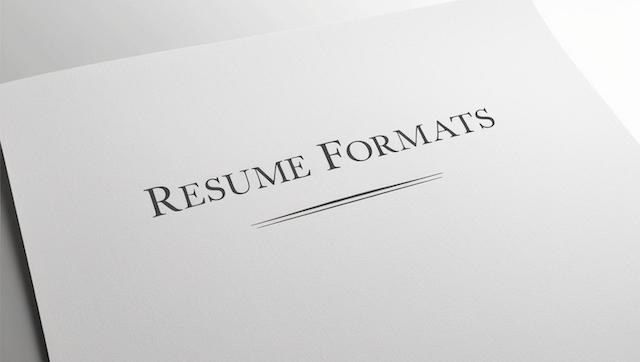Choosing the right resume format is just as important as the information you include in it. The way your resume is structured can effectively showcase your strengths, minimise weaknesses, and capture the attention of hiring managers. Here are 5 resume formats and when to use them. It might be tough to figure out which one is best for you, but this will help you pick the right fit based on your background and career goals.
1. Chronological Resume
What it is: This is the most common format. It lists your job history in reverse order, starting with your most recent job and going back.
Best for: Those with steady job histories, people looking for positions in the same field, and those with promotions to showcase.
Structure:
- Contact Information
- Summary or Objective
- Work Experience (most recent first)
- Education
- Skills
- Certifications or Awards (if any)
Pros: Easy to read and familiar to employers, shows clear career growth, good for Applicant Tracking Systems (ATS).
Cons: Highlights any gaps in your work history, not great for changing careers.
2. Functional Resume (Skills-Based)
What it is: This format focuses more on skills and abilities than job history. Your job titles and employers go at the bottom, while the top showcases what you can bring to the table.
Best for: Career changers, recent grads with less experience, those with employment gaps, and people returning after a break.
Structure:
- Contact Information
- Summary or Objective
- Key Skills and Achievements
- Work History (brief)
- Education
Pros: Downplays employment gaps, emphasises transferable skills, focuses on capabilities.
Cons: Some employers may be wary of it, not always ATS-friendly, and may seem like you’re hiding something.
3. Combination Resume (Hybrid)
What it is: This blends elements of both chronological and functional formats, featuring a skills summary followed by work history in reverse order.
Best for: People with a wide range of skills, career changers with some experience, and those with notable accomplishments in different areas.
Structure:
- Contact Information
- Summary or Skills Profile
- Key Achievements or Projects
- Work Experience
- Education
Pros: Highlights both skills and job history, great for showing growth and abilities, works for various industries.
Cons: Can end up longer than others, may confuse if not done right, and might need some explanation.
Also Read: How to Write a Resume that Gets Interviews.
4. Targeted Resume
What it is: This one is tailored for a specific job, with every detail crafted to match the job description.
Best for: Those applying for competitive roles, jobs needing specific technical skills, and anyone aiming to land their dream job.
Structure:
- Contact Information
- Job-Specific Summary
- Relevant Skills
- Tailored Work Experience
- Customised Education Section
Pros: Very effective when done well, speaks directly to the employer’s needs, helps you stand out.
Cons: Time-consuming to create for each job, not suitable for many applications, and requires a deep understanding of job descriptions.
5. Mini Resume
What it is: A shorter version of your resume, usually just a few lines. It’s useful in networking situations like job fairs or LinkedIn bios.
Best for: Networking events, quick introductions, email bios, or professional profiles.
Structure:
- Name and Contact
- Summary or Objective
- Key Skills or Achievements
Pros: Easy to share in conversations, good for personal branding, keeps your message focused.
Cons: Too brief for job applications, lacks detail, needs a full resume for later use.
How to Choose the Right Format
Here’s a quick guide to help you pick the best resume format:
Chronological: For those with a steady work history.
Functional: For career changers, recent grads, or those with gaps.
Combination: For those with strong skills and good experience.
Targeted: For competitive positions.
Mini: For networking and informal introductions.
When starting or changing careers, consider a functional or combination format. If you’ve been steadily progressing in your career, stick with chronological. If you’re applying for a high-level job in fields like tech or marketing, a targeted resume might be the way to go.
Tips for Making Any Resume Work
No matter which format you choose, keep these tips in mind to make your resume shine:
- Keep it clean and professional—skip graphics and crazy colours.
- Use strong action verbs to start each bullet point, like “Led” or “Developed.”
- Show your impact with numbers when you can.
- Proofread—typos can hurt your chances.
- Use relevant keywords from the job posting for ATS.
Conclusion
The format of your resume is important for how employers see you. Picking the right structure can bring your strengths to the forefront and help you land interviews faster. Whether you’ve been in the workforce for years or are just starting, there’s a format that works for you.
Choose the one that tells your story best. Sometimes, small tweaks can make a big difference in getting noticed.


